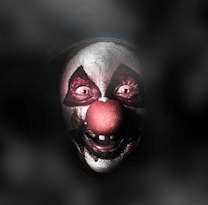There’s an Aunty Acid cartoon about what is insomnia.
It features her sitting up in bed, staring. The caption says, “My day starts backwards…I wake up tired and go to bed wide awake.” The cartoon perfectly illustrates the answer to the question, “What is insomnia?”.
 Anyone who has insomnia knows the feeling. Dreading going to bed, lying awake for hours, waking up frequently. It seems like you live in a different world than other people. You know who jogs at 2 am, and which neighbors stay out late partying. You’ve also Googled every nocturnal bird call you’ve heard to see what kind of bird they are.
Anyone who has insomnia knows the feeling. Dreading going to bed, lying awake for hours, waking up frequently. It seems like you live in a different world than other people. You know who jogs at 2 am, and which neighbors stay out late partying. You’ve also Googled every nocturnal bird call you’ve heard to see what kind of bird they are.
Insomnia is exhausting, frustrating and seems unavoidable. It is a sleeping disorder. There are four main varieties of insomnia. Anxiety or worry are usually the underlying causes.
- Functional Insomnia is caused by a defect in a person’s sleep-wakefulness center in the brain.
- Endogenous Insomnia is caused by a pain or discomfort within the body.
- Exogenous Insomnia is caused by an outside disturbance or noise.
- Psycho-reactive Insomnia is caused by stress of tension. The stress is often caused by worry about the things going on in one’s life. In addition, because the person has spent a number of nights having difficulty falling asleep, there is often a fear that the person will not be able to fall asleep. Over time, this fear grows into an expectation of being stuck awake all night long.
 Children often have insomnia because they may be afraid of having a nightmare, so a part of them keeps their mind in turmoil and they stay awake. A similar fear that keeps them awake, comes from the universal fear about the ‘Bogey Man’ coming out from under the bed to attack them. Here too, a part of them keeps their mind in turmoil and they remain awake.
Children often have insomnia because they may be afraid of having a nightmare, so a part of them keeps their mind in turmoil and they stay awake. A similar fear that keeps them awake, comes from the universal fear about the ‘Bogey Man’ coming out from under the bed to attack them. Here too, a part of them keeps their mind in turmoil and they remain awake.
One in four people suffer from some form of a sleep disorder. What is insomnia exactly?
Insomnia is:
- lying awake for at least 20 minutes
- waking frequently
- sleeping, but then waking for hours
- not feeling rested after sleeping
A severe insomnia sleep disorder can have a negative effect on health and even become dangerous. A person getting too little sleep can be compared to a person who is legally drunk. Luckily there are ways to treat an insomnia sleep disorder.
 Most insomnia treatments only give relief in the short term. Commonly used insomnia treatments are:
Most insomnia treatments only give relief in the short term. Commonly used insomnia treatments are:
- sleep aids
- muscle relaxation
- prescription drugs
- Over the counter drugs
According to WebMD, these are the common side effects of sleeping pills.
- Burning or tingling in the hands, arms, feet, or legs
- Weakness
- Unusual dreams
- Uncontrollable shaking of a part of the body
- Stomach pain or tenderness
- Mental slowing or problems with attention or memory
- Impairment the next day
- Heartburn
- Headache
- Gas
- Dry mouth or throat
- Daytime drowsiness
- Dizziness
- Difficulty keeping balance
- Diarrhea
- Constipation
- Changes in appetite
Lifestyle changes are sometimes suggested:
- remove your phone from your bedroom
- remove your TV from your bedroom
- put up room-darkening curtains
- keep a schedule-go to bed and wake at the same time everyday
- don’t nap
While some of the above can be helpful, they aren’t the cure for insomnia.
Self-Hypnosis: A permanent cure for insomnia.

A real cure for insomnia that has been used successfully by thousands is hypnosis insomnia treatment. Hypnosis insomnia treatment will help you to quickly reach a deeply relaxed state. In this state you will be able to fall asleep quickly and sleep soundly throughout the night.
NLP (Neuro-Linguistic Programming), which is not hypnosis in the traditional sense, is used to train the mind to focus on sleep inducing thoughts, rather than the things that have kept you awake.
There are many different schools of thought when it comes to hypnosis.
There are many different schools of thought when it comes to hypnosis. Almost all consulting hypnotists will make use of ‘Traditional Hypnosis’. Traditional hypnotherapy usually utilizes a formal hypnotherapeutic induction. This is a practice that takes the subject from the waking state, into a relaxed state of hypnosis.
Once the subject is in a hypnotized state, the consulting hypnotist pronounces a sequence of commands like these commands: “Each night, you will get ready for bed at least 30 minutes before you are ready to actually fall asleep. You will get ready by turning off your TV or putting down your book, so that your mind will begin to relax. And as you lay down and your head hits the pillow, you will repeat this short sentence to yourself twenty times. ‘I am tired, sleepy, and drowsy. And as you lay there and repeat your sentence, you’ll become aware of the fact that you are becoming more peaceful and tranquil, and your mind is beginning to drift into a pleasant dream.”
This is ‘Traditional Hypnosis’, and this category of hypnotism is great for people who like to be told what to do. But, it is a bad technique for anyone who is analytical in nature. This type of person will usually have a polarity response and do the exact opposite of what they are told to do.
Process Instructions still fall into the category of ‘Traditional Hypnosis’, but they are much more indirect and much less authoritarian in nature. Process Instructions direct the subconscious to discover a memory of an appropriate learning experience from the past, and use that experience to make a change in the present.
With “Ericksonian Hypnosis,” also known as “Conversational Hypnosis,” we use short stories or metaphors, to insert suggestions and ideas to the subconscious mind. This is an effective technique, because it usually removes the blockage of and resistance to post-hypnotic suggestions, which is often triggered by the conscious mind. There are two types of metaphors, “Isomorphic,” and those of the embedded command or “interspersal” nature.
With the Embedded Command method, the hypnotist offers an interesting story that occupies and distracts the conscious mind. The story contains hidden indirect suggestions that are generally acknowledged by the subconscious/ unconscious mind.
Neuro-Linguistic Programming
As I stated above, NLP is NOT hypnosis in the traditional sense. NLP is a broad field, which offers many different techniques. There is no ‘hypnotic’ induction, and it is generally more interactive, whereby the client is often much more engaged in the process, versus just lying back passively.
In the hands of an expert practitioner, Neuro-Linguistic Programming can be very effective. I utilize several different Neuro-Linguistic Programming systems in my practice, and in my recorded programs.
 NLP Anchoring: Have you ever heard music and had it trigger feelings from a past experience? When you originally listened to the song, you were feeling those emotions, and they subconsciously were connected to the sound of the song. So the music became an ‘Anchor’ for the feelings. Now when you listen to that music, it triggers the same feelings again.
NLP Anchoring: Have you ever heard music and had it trigger feelings from a past experience? When you originally listened to the song, you were feeling those emotions, and they subconsciously were connected to the sound of the song. So the music became an ‘Anchor’ for the feelings. Now when you listen to that music, it triggers the same feelings again.
Anchoring can be a very beneficial practice. Imagine that you have a memory of being on a vacation, perhaps lying on a beach, where you fell asleep with the warm sun washing over your body. If you put yourself back into that memory, you’ll trigger the the same exact feelings that you had at that time. If you touch two fingers  together, say your thumb and your pinky finger on your left hand, while you re-experience those feelings of drowsy, peaceful sleep, that touch will become an anchor for those feelings.
together, say your thumb and your pinky finger on your left hand, while you re-experience those feelings of drowsy, peaceful sleep, that touch will become an anchor for those feelings.
Now, when you get into bed at night, and you trigger that anchor, by pressing the same two fingers together, you will be regressed back into that memory, and you will re-experience those drowsy, peaceful sleepy feelings. Guess what happens next!
Case History
 Arlene J. suffered from chronic insomnia for years. What is insomnia for Arlene? Her insomnia had her lying awake for hours. In the morning she would awaken exhausted. She was unable to function normally or even eat, because she was so tired. She tried hypnosis insomnia treatment, listening to the “Sleep Like A Baby!” CD’s before bed. This program provided for a cure for insomnia. Now she sleeps well and wakes feeling rested. Her insomnia is gone!
Arlene J. suffered from chronic insomnia for years. What is insomnia for Arlene? Her insomnia had her lying awake for hours. In the morning she would awaken exhausted. She was unable to function normally or even eat, because she was so tired. She tried hypnosis insomnia treatment, listening to the “Sleep Like A Baby!” CD’s before bed. This program provided for a cure for insomnia. Now she sleeps well and wakes feeling rested. Her insomnia is gone!
What is insomnia to you?
If you suffer from lying awake in bed and never achieving a restful night’s sleep. If you have tried sleep aids and lifestyle changes. If you have dark circles under your eyes. If you battle grogginess during the day. If you resort to alcohol before bed or have tried meditation or relaxation exercises without success, you have suffered for far too long.
 Professional insomnia hypnotherapy CD’s can provide a cure for your insomnia.
Professional insomnia hypnotherapy CD’s can provide a cure for your insomnia.
Allowing hypnosis to relieve your anxiety and change your sleepless triggers will eliminate your battle for sleep. Instead you’ll have a comfortable routine you can use to achieve the rest you need. Getting the sleep you need give your body the rest it needs to function properly, and heal. A well rested person lives a calmer and happier daily life.

Alan B. Densky, CH has been a practicing certified consulting hypnotist since 1978. After extensive research into sleep disturbances, he developed hypnosis insomnia treatment CD’s. His programs have helped people suffering from insomnia to restore a natural sleep pattern, and sleep like a baby. Mr. Densky can be reached through the www.Neuro-VISION.us website.

